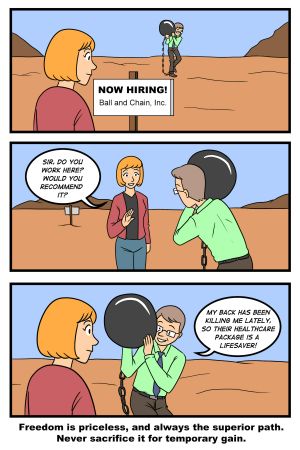Elastic Habits

- Authors
- Guise, Stephen
- Publisher
- Selective Entertainment LLC
- Tags
- personal transformation , self help , good habits , habits
- Date
- 2019-11-21T00:00:00+00:00
- Size
- 14.86 MB
- Lang
- en
**Habits That Bend Don’t Break** Why do so many sincere attempts to build good habits fail? We try our best to be consistent, but some days are better than others. Inevitably, we fail when “life happens,” because each day we try to hit the same targets regardless of the situations we face. How, then, can we make our habits more resilient to the turbulence of life? *By making them elastic.* Most people associate “elastic” with yoga pants and rubber bands. But the word also means “resilient”—the ability to withstand pressure. Elastic materials are far more durable than rigid and brittle ones, which will shatter under pressure. The same is true for habits. A traditional habit is unchanging: the same behavior is done at the same time to the same level every day. It works well until the pressures of modern life break its rigid and brittle shell. Elastic habits are fluid: they can change their form and intensity to suit each unique day. They survive busy, tired, bad days. They thrive in better days. **Adapt Your Habits to Survive Threats** Nature shows us that biological and behavioral **adaptation** to one’s environment is the key to survival for all living things: The most resilient bacteria mutate to survive the threat of antibiotics (to our dismay). Chameleons, octopi, and cuttlefish actively change their color to avoid predators and capture prey. Birds migrate, while bears, bats, and chipmunks hibernate to survive winter. Camels use fat stored in their humps for hydration and energy when food and water are scarce in harsh, arid lands. Living things adapt in many more ways to survive the threats of disease, violence, and natural disasters. Good habits, too, need to **survive** the turbulence of life so they can benefit us for years, not just days or weeks. With the simple and intuitive *Elastic Habits* framework, your elastic habits can instantly shrink themselves into an easy win when a difficult or busy day threatens to ruin your habit streak. **Elastic habits are the adaptation masters of the habit kingdom.** They always find a way to survive, making them virtually unbreakable. Downward flexibility keeps habits safe, but as with animals, adaptation isn’t only for survival. **Adapt Your Habits and Thrive** Elastic habits can expand, adding *significant upward potential* to your life. On any day, you can increase your challenge for a bigger win and reward, so you will never feel held back. Upward flexibility maximizes your potential and keeps you excited about your progress. Elastic habits even have a middle option, a happy medium between two extremes, for “ordinary” days. The up-and-down adaptation of an elastic habit is known as vertical flexibility. There’s also lateral flexibility—the ability to choose from multiple behaviors within a central theme. **A standard habit has one win condition. An elastic habit has *nine*.** If traditional habits are a hammer, elastic habits are your grandfather’s garage. When you’re working on a house project, it’s not a burden to have a hammer, a wrench, and a screwdriver—you just select the one you need when you need it. Elastic habits are the same.